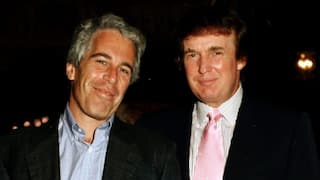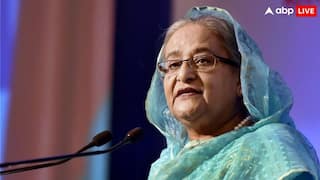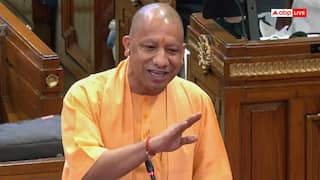A Square Peg In A Round Hole: The OTT Broadcast Redefinition Conundrum

At the outset, let’s first acknowledge that we are in the 21st century. Our digital media landscape is a complex, evolving ecosystem that doesn't take kindly to being squeezed into the mould of the past. Let’s not forget we are talking about grown-up adults here and the State in this case should attempt to legislate on the guiding principles of parental control and to educate and enlighten on the habits instead of playing the helicopter parent to its adult citizens. Ushering OTTs into a realm of broadcast is like inviting a bull into a China shop and nothing good is going to come out of it except unreasonably restricting the freedom of speech or giving them a frosty impact or an icy influence. Such legislation would severely hamper the works of imaginative and creative minds by exposing them to some kind of a stage fright or should we say sending them on a vacation.
Let’s now continue our discussion of the government’s attempt to redefine OTT services as broadcast services, and even if the object is to have content censorship for private viewing, the prime concern which readily comes to our mind is the concern towards children or child pornography. Needless to mention that it’s also about fostering a healthier relationship with technology and creating a safer and more controlled environment for all. As for the government, perhaps it’s time to step back, take a deep breath and reassess the situation.
Undoubtedly, the government must be committed to banning child pornography, and it has taken several measures to disable access to the same. To prevent children from accessing pornographic material, is to practise and promote the use of technology/science of parental control. It would be a bit of a cat and mouse game and a challenge, though. It’s going to be a tug of war between the child and the parents wherein a determined child with boundless curiosity and a knack to outsmart the most sophisticated filters would embark on a daring mission to explore the forbidden realms of the internet on one hand, and with parental control software and techniques on the other. The software, tools and other techniques would therefore need to stand stoically preventing mischiefs of a tech savvy prodigy and also keep a track of the advances made to break them by the young master. There are several ways to achieve the object of preventing children of being exposed to objectionable content which include:
- parental control software, which enable setting time limits,
- blocking specific websites,
- filtering inappropriate content.
- Many modern routers offer parental control features that enable parents to manage internet access for specific devices in the household.
- There are also filters like “safe search”, “age rating” and “content” filters which would ensure to prevent children from stumbling upon explicit or inappropriate content and to ensure that only age-appropriate material is accessible.
- Another method would be to encourage open and honest communication to children about safe and responsible internet and educate them about potential risk and how to navigate the online world responsibly.
- A supervised access, namely allowing children to use digital devices in common areas of home where parents can easily monitor, can go a long way to create a safer and more controlled environment while fostering healthy relationship with technology.
However, the attempt to pigeonhole OTT platforms like Netflix, Amazon Prime, Disney Hotstar, YouTube, etc. into the same regulatory framework as “broadcasting services” is like calling a zebra a horse because both have four legs and a tail! OTT platforms are not just broadcasting services in a digital garb, they are entirely different beast! They are more like a vast digital library where viewers can choose their own adventure so to speak.
The online viewing of OTT content must not therefore be treated like “broadcast” killing creativity, autonomy to produce mature content and imposing unreasonable restrictions on freedom of speech and/or being made subject to similar kinds of regulations. In other words, the same would result in promoting awkward silence by suppressing freedom of speech and expression forcing the OTTs / private entities to only show censored content, when indeed it was meant for private viewing alone. The State must ideally act like a parent and acknowledge that adult citizens have grown up and can manage their own affairs and need not keep a strict quota or a watchful eye on creativity, imagination and ingenuity. It’s like keeping an eye on the menu on the dinner table (or the content on OTT) to ensure that nothing too spicy or controversial made it onto their plate (to regulate them like linear TV programming). How can anyone even imagine a world of silent screams and passive aggressive posts it notes as the future of broadcast.
Boundless Authority To Govt
The BSR Bill has bestowed the government with an extensive authority to make rules or what can be stated to be a divine gift of rulemaking with approximately 60 illustrative instances and an ultimate piece de resistance — an omnibus clause granting the power to make rules on anything and everything. The Clause reads “any other matter which is required to be, or may be, prescribed”.
The Govt. has the ability and the prowess in lassoing services that are intricately entwined into broadcasting network under its regulations. Thus, under Clause 4(5) as also under Clause 39, it has conferred and bestowed itself with a power to regulate by anticipating emerging, future and all interconnected and which are intricately linked to broadcasting networks. This would mean that any medium of transmission or re-transmission which has the potential to have some resemblance to become a medium of broadcast may get encompassed within the purview of the BSR Bill.
Content Evaluation Committee
The Bill introduces the enigmatic Content Evaluation Committee ('CEC'), a self-certification body destined to certify broadcasters’ content. The central government may in its infinite mercy exempt certain programmes that do not require CEC certification. However, it seems the Negative List of content / programmes exempt from classification is shrouded in mystery. One can only assume that this list will encompass live content of “news” and “sports” genre. Of course, the exclusion of any “live programs”, news” and “sports content” should have been promptly disclosed, as these genres presumably have to be exempt, being straightforward almost a no-brainer. The CEC requirement at best can only be applicable (though not desirable) in case of cable / satellite broadcasting network operators, IPTV network operators, Platform Services and cannot include OTTs.
The OTTs are already governed by Code of Ethics under IT Rules, and even they don’t have any such requirement to have a ‘CEC’ in specific and express terms though they are required to provide ratings which are to be on the guiding principles as spelt out in the said Code of Ethics. In a sense, this haphazard content regulation creates a delightful tapestry of uneven rules, burdensome cost and implementation nightmares to broadcasters under the BSR Bill.
Self-certification by Content Evaluation Committee [CEC] under Sec 24(2)
The CEC must be members who are eminent individuals representing different social groups including women, child welfare, SC/ST, minority, etc. Does it mean the broadcast content becomes more trustworthy if left to a diverse array of esteemed personalities? The central government in its boundless wisdom would determine the number of members in this illustrious committee of CEC. And fear not, the broadcasters are graciously required to intimate the central government and publicise on website the details pertaining to the name, credentials, etc. of the esteemed members of the CEC as if the public is eagerly awaiting this riveting information! The fun doesn’t stop there! Every broadcast must be certified by the CEC and only certified programmes are eligible to be uplinked for further distribution/re-distribution. Further, this provision would come into effect only after 180 days.
On a prima facie reading itself it is clear that this provision is drafted in blissful ignorance of the way programming gets done for broadcast across different genres. This would lead to hijacking and subjecting broadcasters to a new set of processes which are not only extremely onerous and burdensome but would also have the side-effect of forcing the standards and practices department of broadcasters to include external members due to a statutory mandate. The cherry on the top is the penalties associated with it:
- Not intimating the central govvernment and not publicising the names and credentials and other details of the members of CEC would invite penalty of Rs 50 lakh for first contravention. For second subsequent contravention within 3 years, the penalty would be Rs 250 lakh.
- Broadcasting programmes without certification from CEC would invite Rs 100 lakh penalty for first Contravention and Rs 500 lakh for secnd subsequent contravention within 3 years.
- Not displaying CEC certificate in a proper manner would invite Rs 20 lakh penalty for first contravention and Rs 100 lakh for second subsequent contravention within 3 years.
It would not be practically possible to certify and then telecast as that’s never the way any broadcast company works. The scheduling and telecasting of programming on different genres of TV channels involve a multi-step process that includes planning, content acquisition, scheduling, and content control through standards and practices teams. TV channels across genres acquire content in different ways.
- For example, general entertainment channels (GEC) may produce their own shows, acquire content from production houses, or license content from other sources.
- Infotainment channels may produce documentaries, reality shows, and educational content.
- Movie channels may acquire movies through licensing agreements.
- News channels gather news through their reporters and news agencies, while sports channels acquire rights to sporting events.
Once the content is acquired:-
- TV channels have scheduling and planning teams that work on creating a programming lineup. This process involves understanding the target audience, analysing ratings, and considering factors such as audience demographics, time slots, and competition from other channels.
- Each genre has its own considerations; for example, GEC channels may plan for a mix of soap operas, reality shows, and game shows to attract a wide audience, while news channels plan their schedule around breaking news and current affairs programmes.
After the scheduling is finalised, the content is telecast according to the planned lineup. This involves technical coordination to ensure that the right content is broadcast at the right time, including advertisements and promotions.
S&P Teams Of Channels
Every TV channel already has a standards and practices team responsible for ensuring that the content meets the law of the land, the channel's guidelines and industry standards. This team works to maintain the quality and appropriateness of the content being telecast. The CEC certification would therefore only cause hardships and sufferings in the entire way programming works and would make it practically impossible for any broadcaster to implement the same in letter and spirit.
The S&P team of broadcasters:-
- For GEC channels, the S&P team ensures that the content is suitable for the channel's target audience. They review scripts, monitor shows for compliance with broadcasting standards, and ensure that the content aligns with the channel's brand and values.
- For infotainment channels, the team focuses on fact-checking and ensuring that the information presented is accurate and educational. They also ensure that any reality shows or documentaries are produced ethically and do not mislead the audience.
- For movie channels, the team may focus on content ratings, ensuring that the movies being broadcast are suitable for the channel's audience. They may also review promotional materials to ensure they are appropriate for the channel's image.
- For news channels, they play a crucial role in ensuring the accuracy and fairness of news content. They may also monitor for any sensitive or graphic content and ensure that it is handled responsibly.
- For sports channels, they may focus on issues such as fair play, sportsmanship, and the appropriateness of content related to sporting events, especially in cases of controversial incidents or behaviours.
Thus, the S&P teams work closely with content creators, producers, and editors to ensure that the content meets the channel's standards and is following industry regulations. They may also handle viewer complaints and feedback related to content.
Hence, this fresh statutory requirement under the BSR Bill to conjure up the CEC seems to be an added burden for broadcasters. Not only does it threaten to make their lives inquisitively onerous and difficult, but the bonus of potential penalties adds insult to injury.
Further, this can even lead to:
- Potential market distortion as this analogous equivalent of old fashioned government-sanctioned content certification /censorship could very well favour content of certain media outlets, stifling competition and innovation and limiting the availability of diverse and independent media sources. It's like only one type of Margherita pizza available in the market and goodbye to all other favourite toppings.
- This would be a direct infringement of the freedom of expression and such certification creates a risk of censorship and limits the diversities of ideas and opinions in society.
- The CEC so constituted can also result in arbitrary decisions and bias and can also raise suspicion as to the government control, political interference, favouritism, and suppression of dissenting voices.
- As already stated, such government control over content certification may also create market distortion by favouring certain types of content or certain media outlets. This can stifle competition and innovation as well as limit availability of diverse and independent media sources.
Thus, a more market-oriented approach allows or a wider range of content options and encourages healthy competition. Broadcaster already has an effective S&P team and thus there should not be any further onerous obligations. Also, instead of relying solely on content certification, investing in education and media literacy programmes can empower individuals to critically evaluate and navigate the vast amount of available content. Promoting media literacy helps individuals make informed choices, distinguish between credible and unreliable sources, and reduces the need for heavy handed content regulation. Ultimately, it's about promoting a healthier relationship with technology and crafting a safer and more controlled environment for all. Not every problem is a nail requiring a hammer and OTTs definitely are not broadcasters in a new guise.
PART I | Broadcast Services (Regulation) Bill 2023 Is A Bold Leap Of Faith Without A Safety Net
(The author is an independent counsel and columnist)
Disclaimer: The opinions, beliefs, and views expressed by the various authors and forum participants on this website are personal and do not reflect the opinions, beliefs, and views of ABP Network Pvt. Ltd.


























